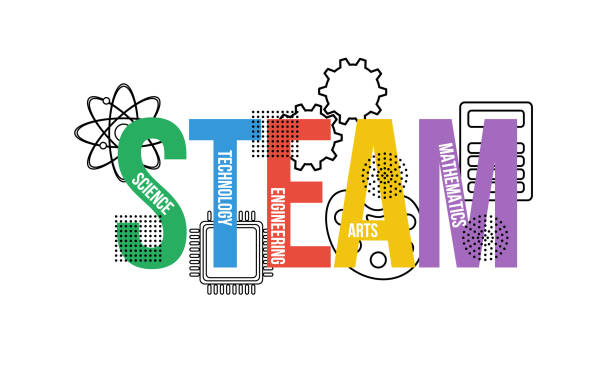
Understanding the Common Core Standards
Posted February 10, 2015, 7:28 pm by
As the educational director at a private educational institute, I was intrigued with the proposal and passing of the new Common Core Standards in the United States. And, like most educators, I had a lot of questions. As a parent of a school age child I also had a lot of questions about how it would be implemented in local schools. A recent parent meeting at my daughter’s school district raised many more questions than answers. Here I am happy to share some of the findings from my own research on Common Core standards.
Findings on the Common Core Standards
What I discovered is, at its simplest level, Common Core is a set of standard educational bench marks in mathematics and English Language Arts/Literacy (ELA) that will be used by every school throughout the United States, though there are a couple of states that have not adopted yet. These learning goals outline what a student should know and be able to do at the end of each grade level. The standards were created to ensure that all students graduate from high school with the skills and knowledge necessary to succeed in college, career, and life, regardless of where they live.
For years American students have lost ground to their international peers. One reason is an uneven patchwork of academic standards. Before the adoption of Common Core each state was allowed to adopt a different set of standards that could differ from state to state, region to region and sometimes school to school. Common Core Standards provide consistency from school to school, region to region and state to state.
That is the goal, but what about the details?
Details of the Common Core
In language arts (ELA) the key shift is the 50/50 reading list. Students will be immersed in information about the world around them. So the required reading for each grade level will consist of 50 percent nonfiction materials. This ensures that students can independently build practical knowledge and skills through reading and writing. Reading, writing, speaking, and listening should span the school day from K-12 as integral parts of every subject.
While changes to the Language Arts standard have been debated by some, the subject area that has received the most debate is Mathematics. The previous standards are “a mile wide and an inch deep”. The previous way of teaching math focused on disconnected topics, tricks, or mnemonics. The new standards focus on authentic command of mathematical concepts. To help students meet the standards, educators will need to pursue, with equal intensity, three aspects: Conceptual Understanding, Procedural Skills and Fluency with improved speed and accuracy, and Real World Applications. When I read that, I was actually relieved and excited. You see, that is actually what my fellow faculty at Areteem Institute have been teaching our students for years.
The Areteem Institute, where I am an educational director, was founded with the intent of training students to “think, read, write and analyse to be able to creatively tackle modern, real world problems”. Ultimately this is the goal of Common Core. While Mathematics seems to be straight forward at some point, like one plus one equals two, higher level Mathematics requires a much more analytical approach to each problem or series of problems to find the correct solutions. Areteem’s higher level math students, many of them multiple winners in Math Counts and Math Olympiad competitions, use the same set of skills that all American students will learn: Conceptual Understanding, Procedural Skills and Fluency with improved speed and accuracy, and Real World Applications. Areteem students frequently compete with and outperform students from around the world. Common Core Standards will allow all American students the same opportunities.
Some see Common Core as the answer to all America’s educational problems. Some see Common Core as the ruination of the K-12 system. Common Core is somewhere in between. It is a baseline, a starting point for a new era in American education. The implementation will take time as course design is just beginning. There are challenges to both teachers and parents who want to be heavily involved. “Asking a student to understand something means asking a teacher to assess whether the student has understood it.” That requires teachers to have more solid foundation in the math concepts and problem solving techniques. “The standards set grade-specific standards but do not define the intervention methods or materials necessary to support students who are well below or well above grade-level expectations.”
Ultimately, through my experience and research, if implemented well, I believe the common core standards will put America back on a competitive academic level and that with these new standards our students will become more equipped to compete in the more competitive international job market. There are limited resources available to the teachers. Whether the standards are implemented well is depending on the resources the schools and district are allocating for their teachers. We certainly hope these Standards are not going to be new names for old ways of doing business.
With mathematicians and college professors on faculty, Areteem Institute is experienced in providing teacher training in teaching conceptual level understanding, tricks to speed up the procedures with accuracy, and how to teach problem solving real world applications, with hands-on materials and carefully selected problems that the teachers can take back to their classrooms immediately.
Blog Categories
- Career Advice
- College Admissions
- Colleges & Universities
- Financial Aid and Scholarships
- For Counselors
- For Parents
- For Students
- Gap Years
- Mental Health and Wellness
- Online Learning
- Performing and Visual Arts
- STEM Majors and More
- Summer Programs
- Teen Volunteering
- Trade & Vocational Schools
- Tutoring & Test Prep

Organization with listings on TeenLife? Login here
Register for Free
We’re here to help you find your best-fit teen-centered academic and enrichment opportunities.
Forgot Password
"*" indicates required fields








